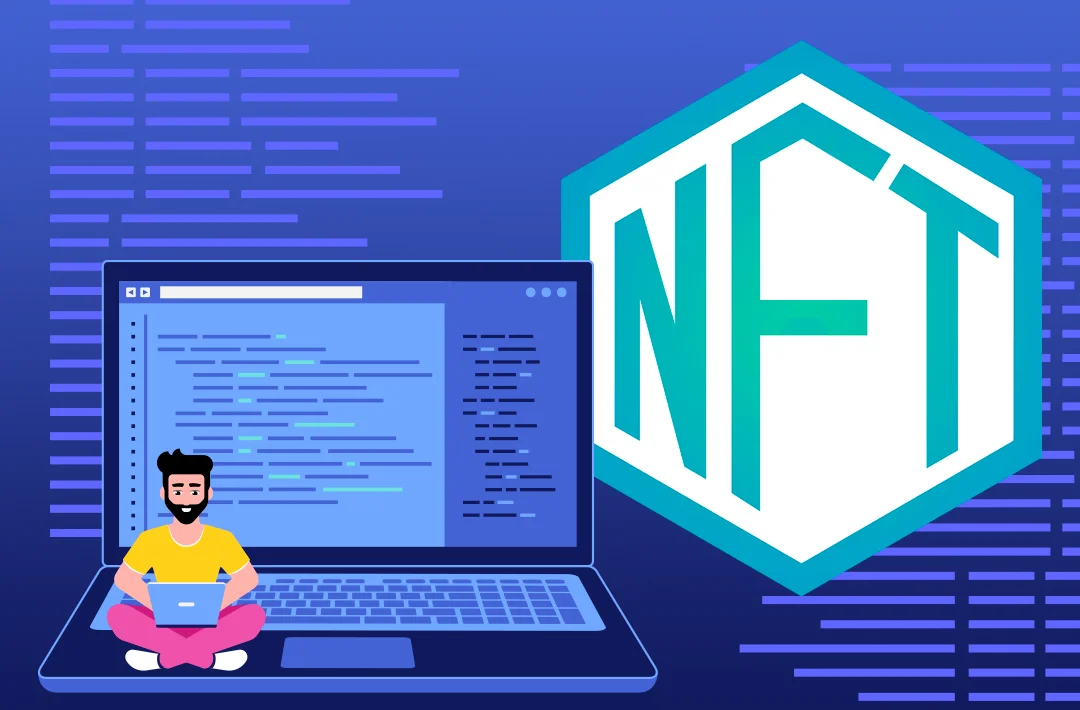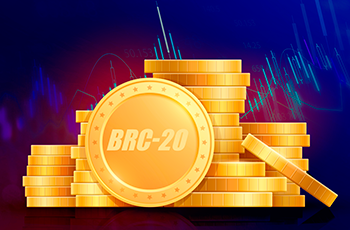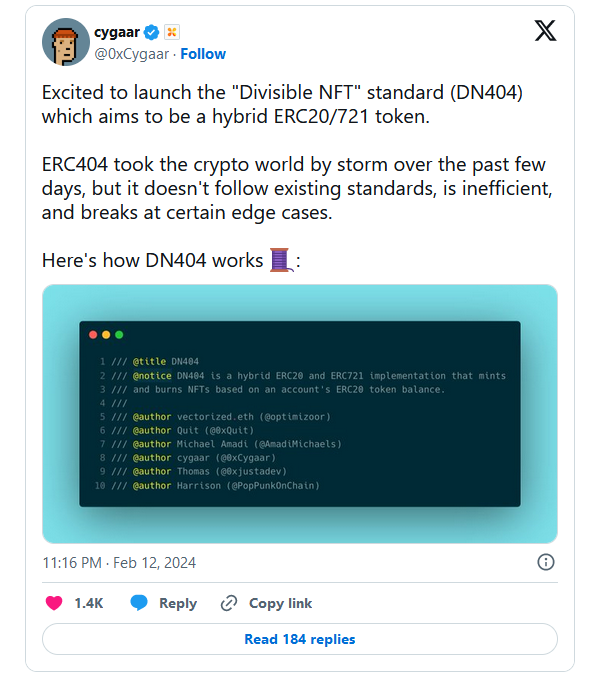Development team introduces the “Divisible NFT” token standard
The ultimate goal of the specialists was to create a tool that could work as an NFT with built-in fractionalization

13.02.2024 - 07:40
254
3 min
0
What’s new? The development team has unveiled a new token standard, “Divisible NFT,” which allows holders of non-fungible tokens (NFTs) to trade fractional portions of their assets. Experts said the tool aims to become a hybrid ERC-20/721 token. “Our end goal was to create a token standard that could act as an NFT with native fractionalization built in,” a user under the nickname cygaar said.
What else is known? The developers have criticized the ERC-404 standard, saying “it doesn’t follow existing standards, is inefficient, and breaks at certain edge cases.”
ERC-404 was launched in February by the Pandora project. The standard is designed to link NFTs to ERC-20 tokens so that users can use fractional parts of non-fungible tokens. Thus, ERC-404 allows multiple wallets to own parts of a single NFT and use them for trading and other transactions.
While ERC-404 can interoperate with ERC-20 tokens and NFTs, special protocols are still required to implement the standard. Cygaar explained that the DN404 approach uses two contacts: a “base” ERC-20 with a “mirror” ERC-721.
According to the developer, this is because the bulk of the trading takes place on the ERC-20 token contract, described as NFT shares. When ERC-20 bases are transferred, mirrored NFTs are burned and released automatically.
A wallet with a number of tokens equal to at least one base unit will receive NFTs under the mirror contract, and assets are conversely burned if the wallet holds less than the minimum number of base units.
Cygaar revealed that the ultimate goal was to allow users to trade NFT pieces without any intermediaries on both marketplaces and decentralized exchanges (DEXs).
The developer warned that the code “has not been formally audited so you are using it at your own risk.”

Ordinals and Inscriptions: the fundamentals of BRC-20 tokens
We explain the distinctive features and ways of storing tokens and NFTs based on the blockchain of the first cryptocurrency
Previously, Binance experts said that the bitcoin Ordinals market is in its infancy, but it has already split into several sectors, including DeFi, NFTs, and tools, contributing to a small but actively growing ecosystem.
Useful material?
Market
The company’s unrealized profits from investing in its first cryptocurrency approached $14 billion
Nov 19, 2024
Incidents
The search, the reason for which was not announced, took place a week after the election, the results of which Polymarket users predicted quite accurately
Nov 14, 2024
Market
Analysts point to the growing popularity of the first cryptocurrency as a safe haven asset
Nov 13, 2024
Market
The product will begin trading on the Swiss Exchange on November 19
Nov 12, 2024
Market
The company’s unrealized profits from investing in the first cryptocurrency approached $13 billion
Nov 12, 2024
Market
The company predicts that the rate of the first cryptocurrency will grow to $200 000 by the end of next year
Nov 11, 2024










 Telegram
Telegram  Twitter
Twitter